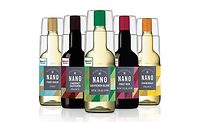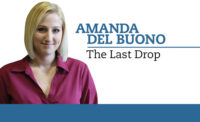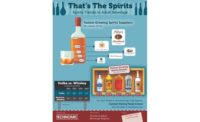Mobile shopping apps fastest-growing segment
Drizly eCommerce app helps consumers find new brands, products

The digital age is here to stay, and mobile-obsessed shoppers have the world literally at their fingertips. Whether it's tablets or smartphones, apps can be used to count calories, refill prescriptions, research vacation destinations and much more. Although the use of mobile apps overall has increased 76 percent during the past year, shopping apps grew 174 percent — surpassing segments such as social media (103 percent), health and fitness (89 percent), sports (74 percent) and gaming (30 percent), according to Barrington, Ill.-based Willard Bishop’s June 2015 report titled “Competitive Edge: Delivering the Killer Shopper App.”
Growing exponentially, shopping apps provide convenience, productivity, price comparison and overall shopping enjoyment along with a basic set of capabilities and features, which typically include store information, weekly ads, shopping lists, recipes, coupons and prescriptions, the report notes.
“In addition to the basics, leading retailers are including a variety of innovative and unique features within their shopping apps,” Willard Bishop Partner Jon Hauptman said in the report. “These ‘above and beyond’ features help to differentiate the retailer’s offerings, which results in enhanced shopper satisfaction and improved loyalty.”
For example, Minneapolis-based Target Corp. delivers special offers to patrons through its Cartwheel app, which enables shoppers to review and load a list of exclusive promotions. Once all promotions are loaded, Cartwheel produces a barcode that the shopper uses at checkout to receive the savings, the report notes.
Additionally, Target announced in December that it will expand its same-day, online grocery delivery service to Chicago. Partnering with Instacart, Target’s same-day delivery feature also is available in California and Minnesota.
Willard Bishop’s report notes that some retailers are using their apps to help shoppers purchase items that are not part of the store’s traditional assortment. “Costco’s retail app allows members to shop Costco.com’s expanded assortment, including thousands of items not found inside a Costco store, and have these items delivered to their homes,” it says.
Yet, as eCommerce demand increases, retailers must ensure a consumer’s online grocery shopping experience is positive. “Thirty-seven percent of consumers are still uncomfortable with the idea of online grocery shopping and nearly half, 46 percent, cite product content availability or a lack of trust in the content provided as a barrier,” Chicago-based Shotfarm’s 2015 Product Information Report states.
Data security and privacy also are concerns, notes Chicago-based Mintel’s October 2015 report titled “Mobile Apps – US.” “The majority of respondents valued the convenience that mobile apps provide [but] at the same time, more than 60 percent feel that many apps, such as those that monitor users’ locations, are too intrusive.”
Apps also build brand loyalty. The report adds that 57 percent of 1,707 Internet users aged 18 and older like to use mobile apps released by their favorite brands, with 80 percent of males ages 25-34, and 75 percent of females, ages 25-34, as the most likely to utilize those apps.
Differentiating digital shopping
In the eCommerce beverage business, the Drizly app is powering an on-demand shopping experience for beer, wine and liquor that brings speed and convenience to alcohol delivery to legal-age consumers — with no product markup, but there is a $5 fee in all markets except New York, according to the company.
Since launching in 2013 in Boston and New York, Drizly has expanded into 18 major markets across the country. “Between the $17.8 million we’ve raised to date and the numerous partnerships we’ve launched, most notably with the Wine and Spirits Wholesalers of America, we’re growing at a nice pace,” says Drizly’s Senior Manager of Communications Kerin Horgan. “Just like you would order a pizza or a car service, Drizly is providing a convenient service that makes consumers’ lives easier.”
However, competition continues to grow in the booming on-demand alcohol delivery market. On Feb. 17, New York-based Thirstie announced it had acquired Chicago-based DrinkFly, expanding its reach to more than 22 markets.
In Drizly’s “2015: A Year in Drinking Report,” Texas-based Tito’s Handmade Vodka was the No. 1 product purchased in the company’s Texas, California, Louisiana, New York, Washington, Florida and the District of Columbia markets. Across all markets, the Top 5 selling beverage brands were Tito’s Handmade Vodka, Bud Light, Stella Artois, Svedka Vodka and Oyster Bay Sauvignon Blanc.
Horgan notes that brands that sell well on Drizly also have a strong following in the liquor industry overall. “I think consumers go with what they know and make a lot of decisions based on price,” she says. “You can also see a lot of the industry trends reflected in our sales. You see beers like Bud Light and Coors Light being a go-to beer option, but on the flip side we’re also seeing craft beers creeping up to make up a good portion of sales in a lot of markets.”
As more consumers embrace shopping apps, the impact will not only affect the individual shopping experience, but also brick-and-mortar stores. “Mobile apps will be the preferred delivery vehicle for providing highly personalized promotions that cater to specific needs and behaviors,” Willard Bishop’s report states. “It won’t be long before we see supermarkets expanding their base assortment with specialty foods across the globe, available via the chain’s mobile app.”
Looking for a reprint of this article?
From high-res PDFs to custom plaques, order your copy today!






